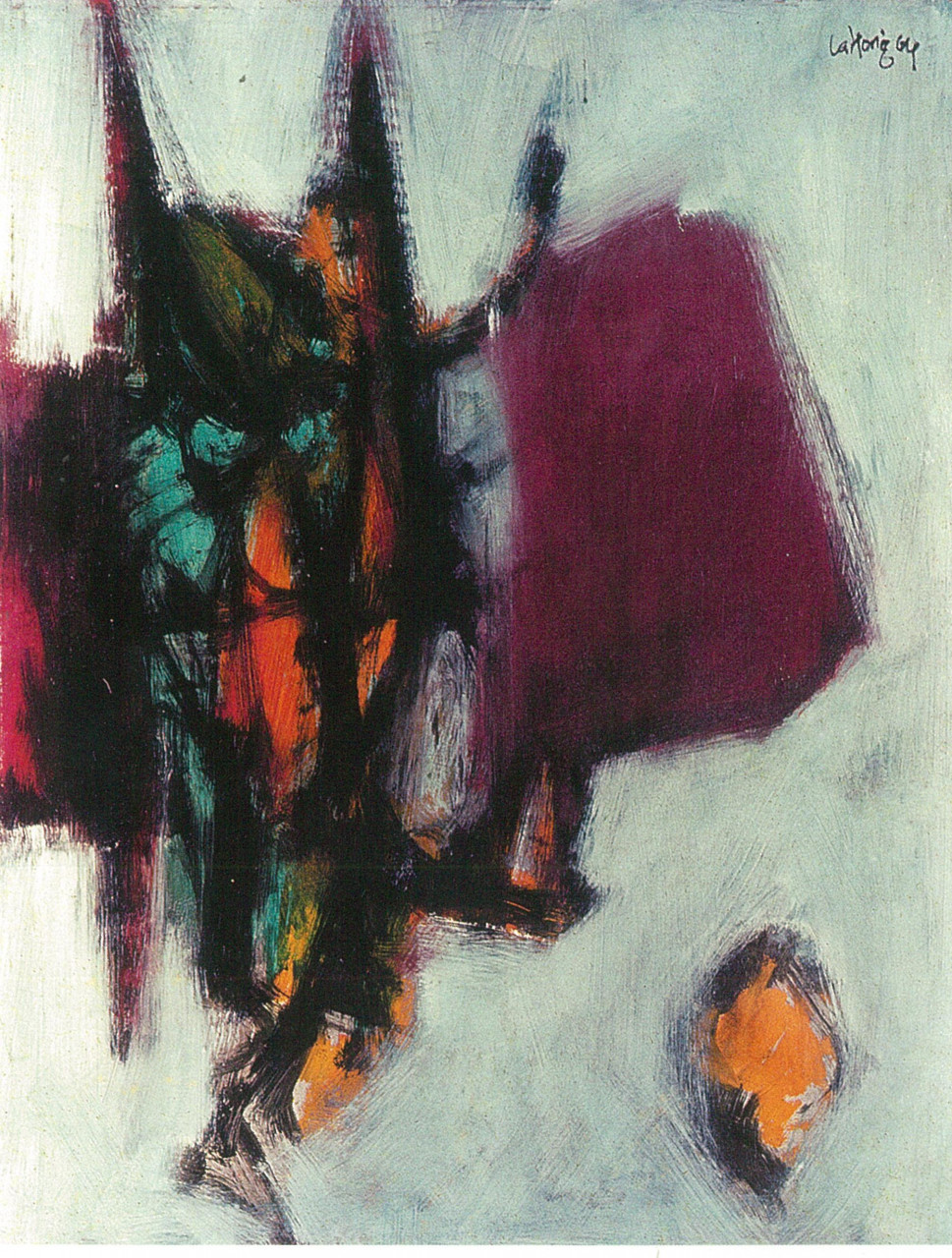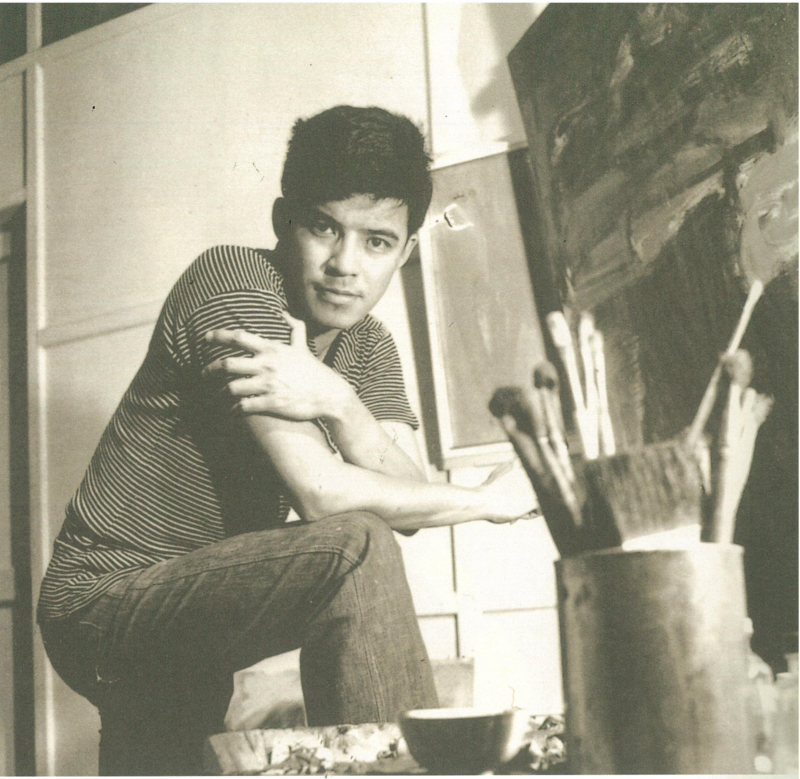“There is no doubt that he loves to paint. From the first time of his ever first solo, he has engaged in lyrical abstraction, a style that allows his audience to take a walk in his paintings, moving through lines and forms, into fields of colours, to surrender to light and space, and move into an imagined world filled with an array of emotional expressions.”
~ Syed Nabil Syed Nahar
EVERYONE perceives art in countless ways. Writers write, doing their best to convey an artist’s work in the hope that readers will be able to get into the painter’s mind and understand what he or she is saying. But there are many times this “quest” fails miserably. Still, these stories must be written, and artists remembered for their role as the penglipur-lara (story-teller).
I do not know Cheong Laitong well. We have met a few times at his exhibitions, mainly at the ones held at NN Gallery, National Art Gallery and Galeriwan. We did speak several times, and along the years, I have always anticipated going to his exhibitions, a thing which has become more and more trying now because much of the art out there has become completely reticent, lazy and gratuitous.
Not Laitong though. Never Laitong.
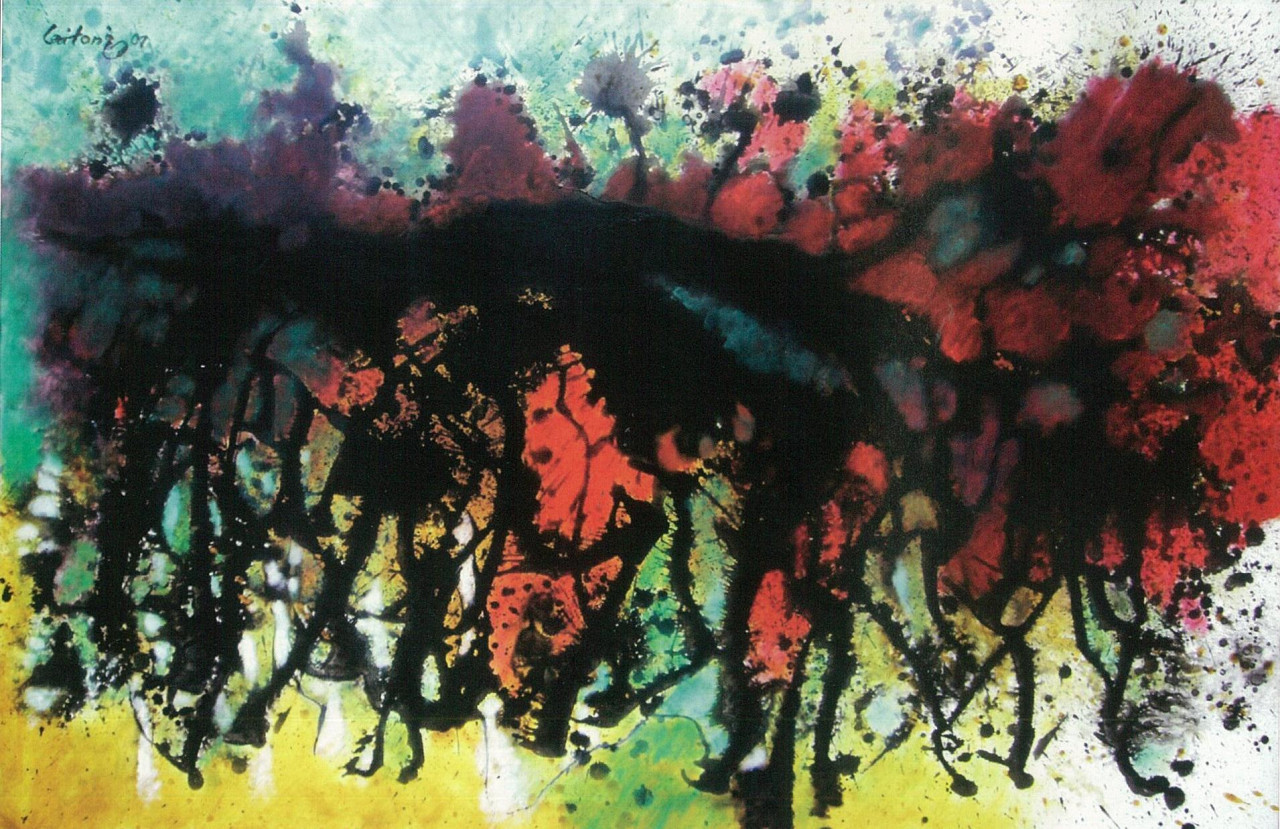
Laitong says, “I never had any inspiration before I paint. During the 60s and 70s, painting was so easy, the feeling flows just like a waterfall. I had to produce 25 to 30 paintings a year in three to four months. After that, I had to wait for the 'water to flow again’ the following year. It was so ‘fantastically easy’! People asked how I did it. I do not know. It is the feeling and intuition.
"Today, unfortunately, painting has become difficult, that feeling is no longer there. Without being able to paint, I do not think it is worthwhile to call myself an artist anymore. Being an artist, one must be able to paint and work from that emotion instead of being a craftsman. I want to add that being an artist, one must be able to realise the sound and sight of nature. If you are unable to do this, then painting becomes something forced. Let’s use Mozart as an example – I may not have full knowledge of his work but his music is so well appreciated, just goes with the flow. Seems so effortless! His work lives forever.”
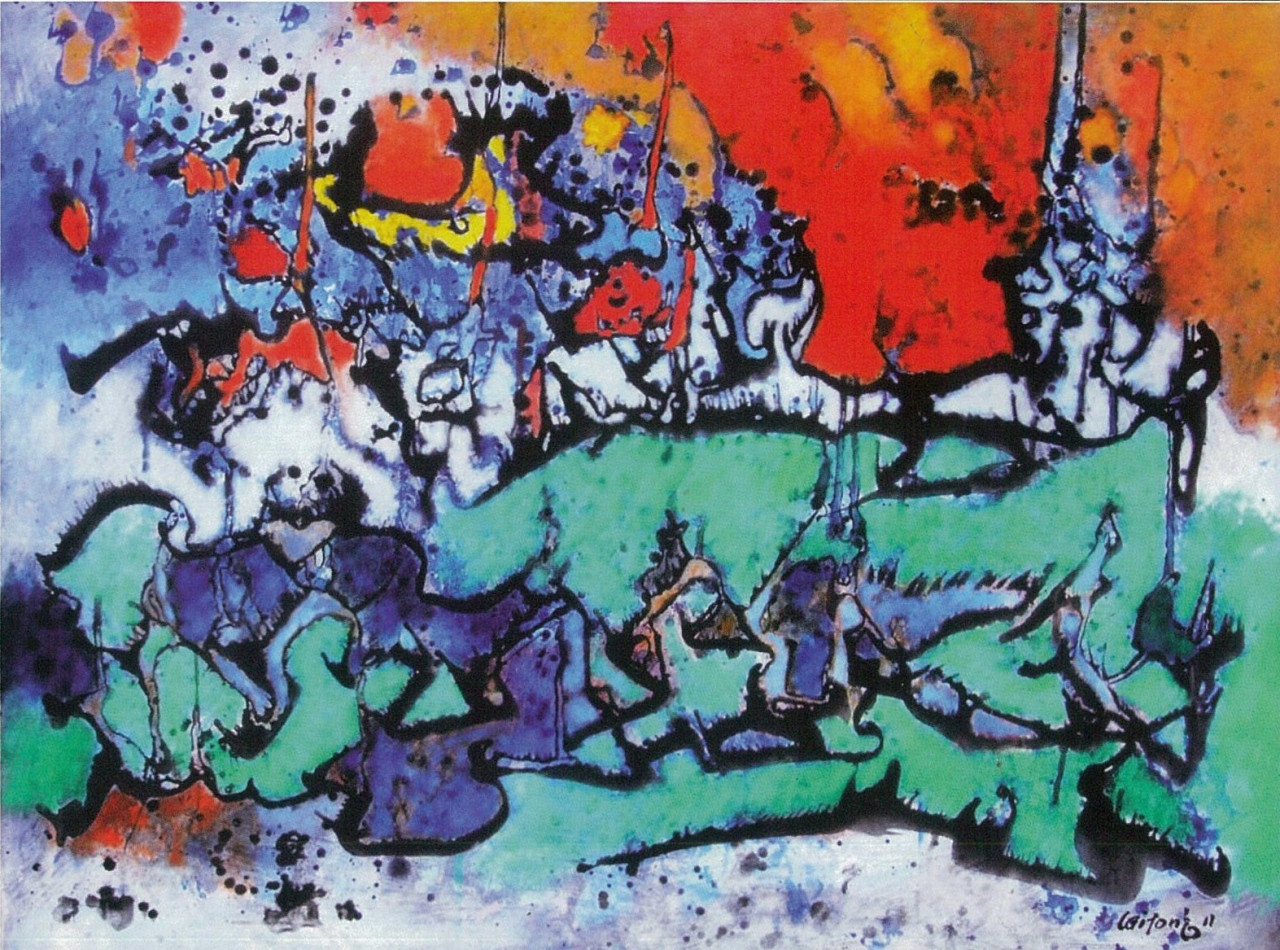
Born in Guangzhou, China and raised in Malaysia, many are unaware of Laitong’s long and profound career. The Venetian glass mural at our National Museum? That is his handiwork. While working for more than three decades as creative director with a titan tobacco company in the advertising division, Laitong painted prodigiously and held exhibitions that were staggering, deeply meditative, philosophical, and with subtle sensual nuances.
Laitong’s body of works are at times sentimental, his canvases bear dignity and fortitude, a distinctive quality of voice and that combination of beauty and sensuality which we hardly see anymore. It is magic seen through the mind’s eye, a mixed ‘language’ that is universally understood and loved. And what more can we ask from an artist?
Abstract works to most of us are quite baffling and honestly, I’ve eavesdropped on enough conversations amongst viewers to know that they have absolutely no idea what is going on. I do not blame them; abstract paintings are most times indecipherable, and that is why we need the catalogue essays, we need someone to explain what these lines, colours and shapes mean.
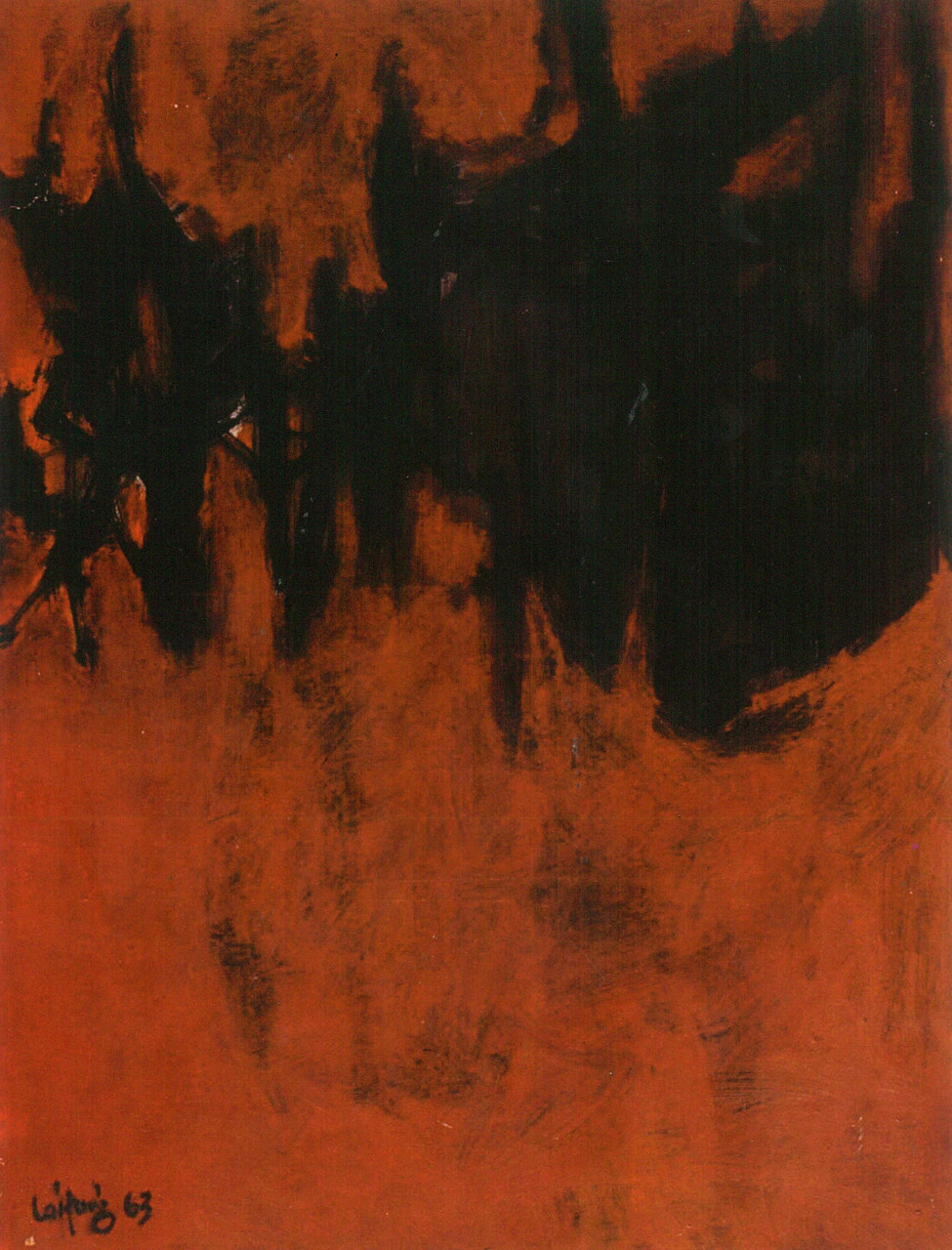
For the writer, it can be frightening – you’re responsible for ‘convincing’ readers what the artist’s intentions are, or at times, there are no intentions at all. Some paint for reasons inexplicable, so cryptic, you find yourself battering skull against any hard surface within reach – ‘compare’ the works to others, do an analysis, re-read all the art history books ever published and if nothing helps, one unintentionally adds the position of mind-reader into our resume. But art is one definite thing – it has the power to accomplish what is incomplete in life. Through art, we are given glimpses into a timeless portal where reality is what we want it to be.
But then again, every once in a while, you are gifted with that rare experience when everything is clear as day, the works not only make sense but evoke previously dormant emotions. What sets Laitong apart from many artists is his sense of ‘being’; he paints for no attainment, the works you see are actual breaths, they are his veins, his blood, his soul. So much has been written about him, and each writer expressed their opinions beautifully. But in these harrowing times when all has become diabolical in every possible way, there is something else in his works that I have not realised before. They now have no end, they are a beginning.
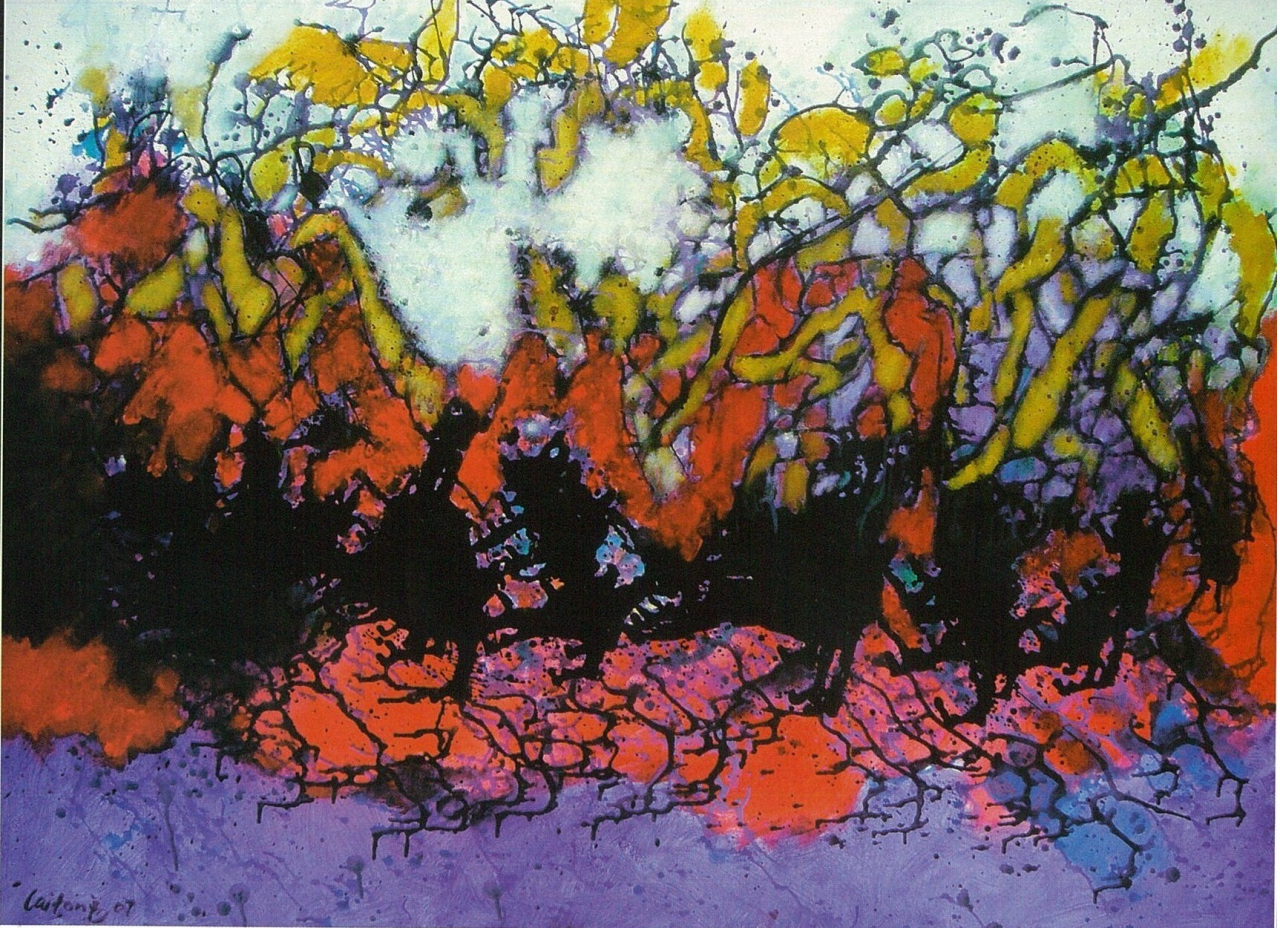
Laitong is 89 this year, and the amount of paintings he had so devotedly made resonates still, for always. “I am blessed with a loving family and we lead a harmonious life. My children, I am so proud of as they possess artistic abilities. Personally, I have not noticed if the younger generation of artists is influenced by my work, but that is not the point. Our local young painters should paint as Malaysian and not become obsessed with foreign trends. Create your own individuality, style and to flow with your own nature and environment.”
This review would not be possible without the invaluable input of NN Gallery’s (which hosted many of Laitong’s exhibitions) Nora, who sent almost all of Laitong’s catalogues right to my doorstep, procured his quotes and replied to messages instantly which I sent at ungodly hours. Dearest Bulan, thank you for your love for the arts, for Laitong, for being relentlessly-dedicated, for your invincible spirit. – The Vibes, March 14, 2021
